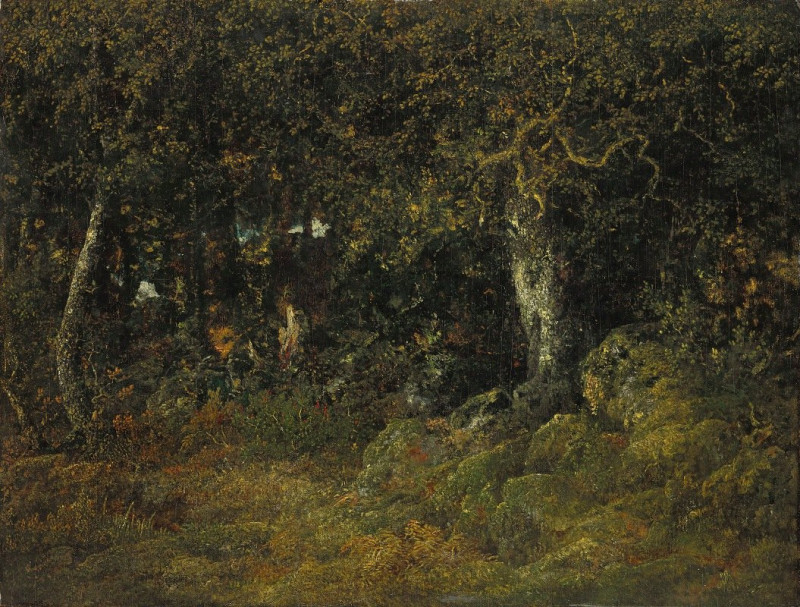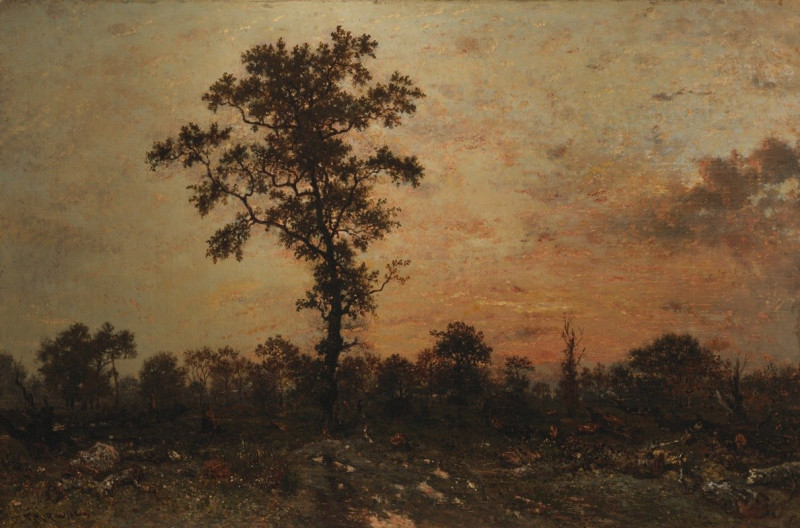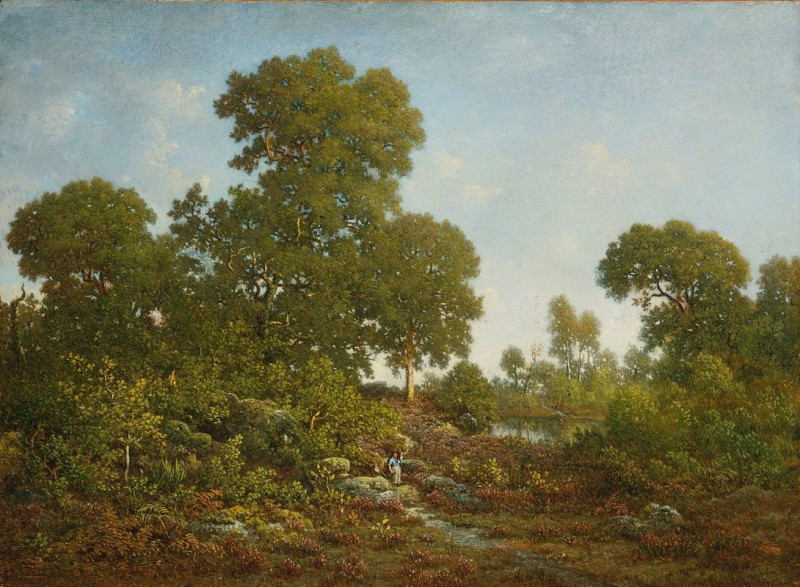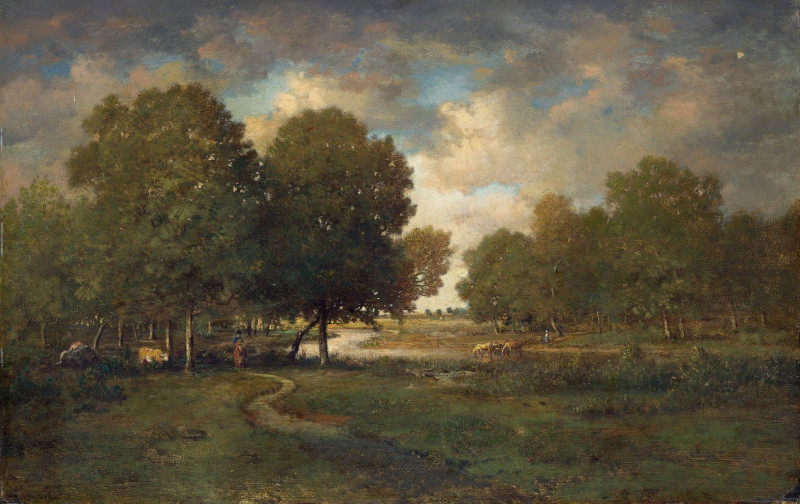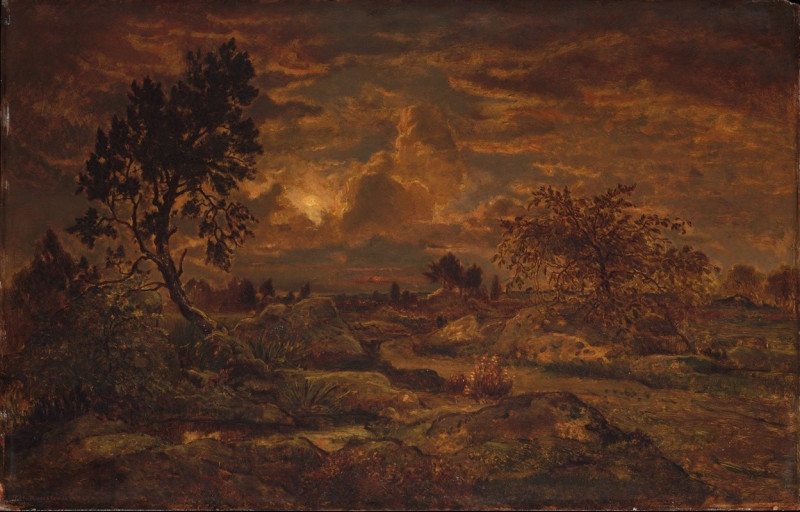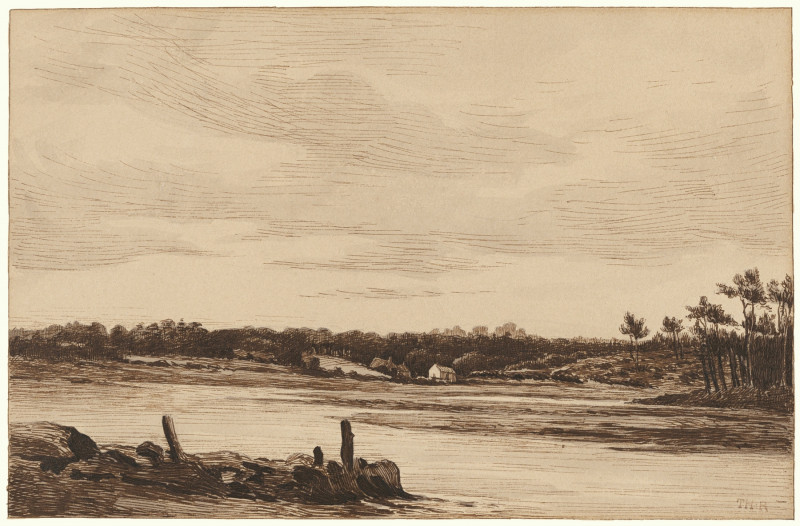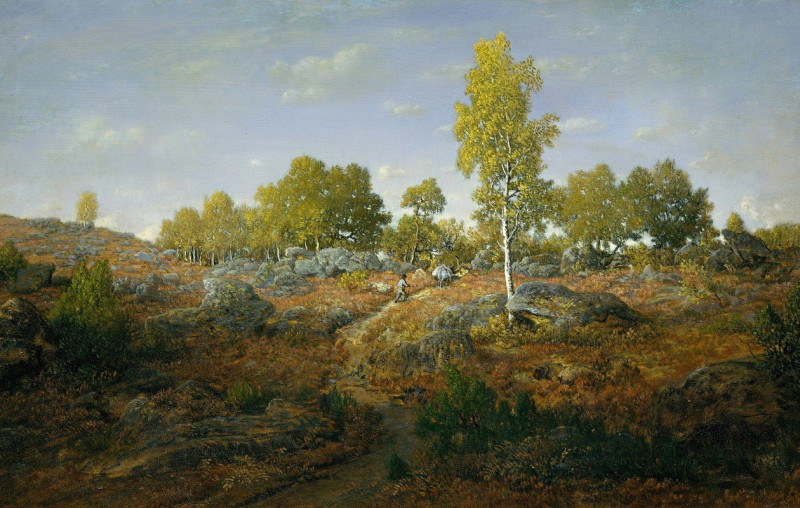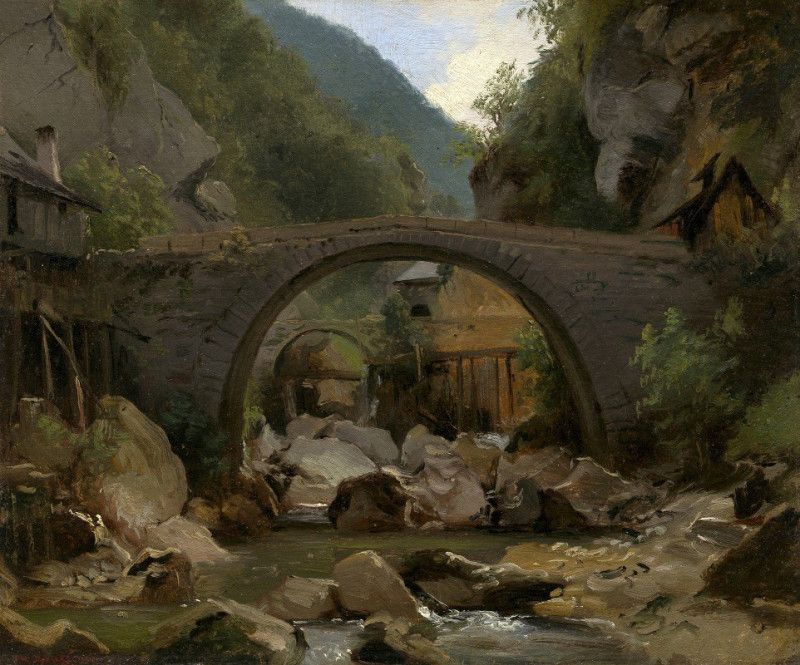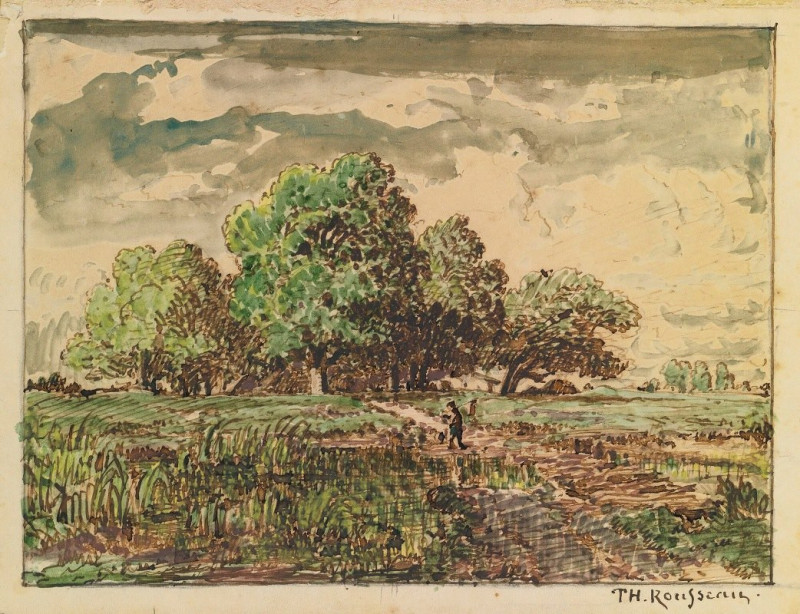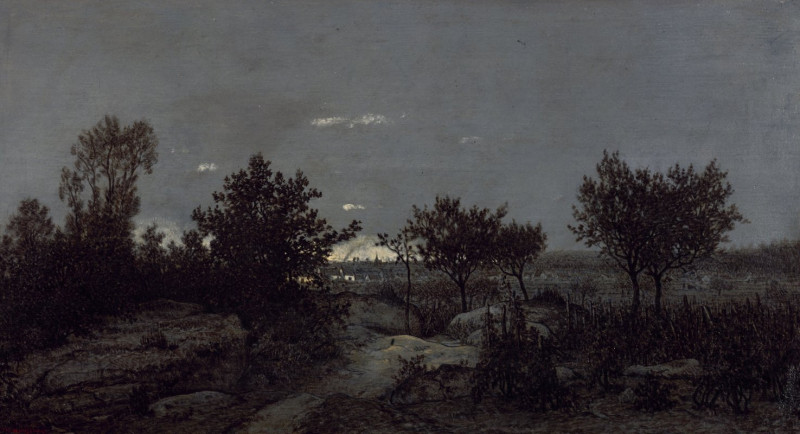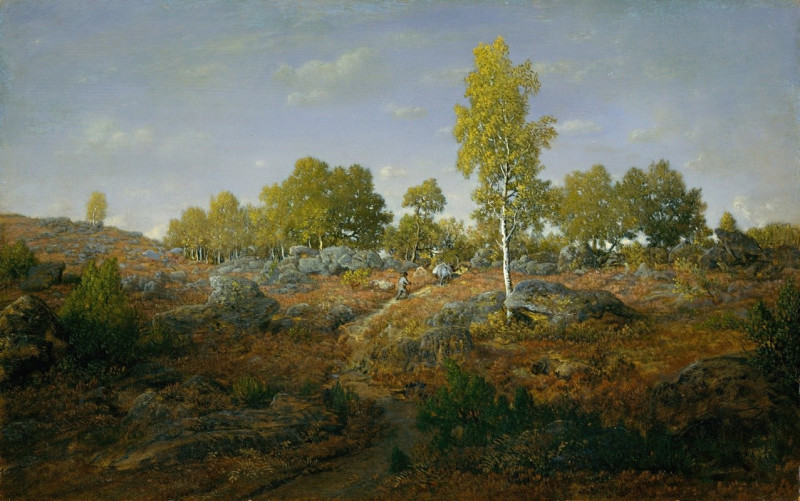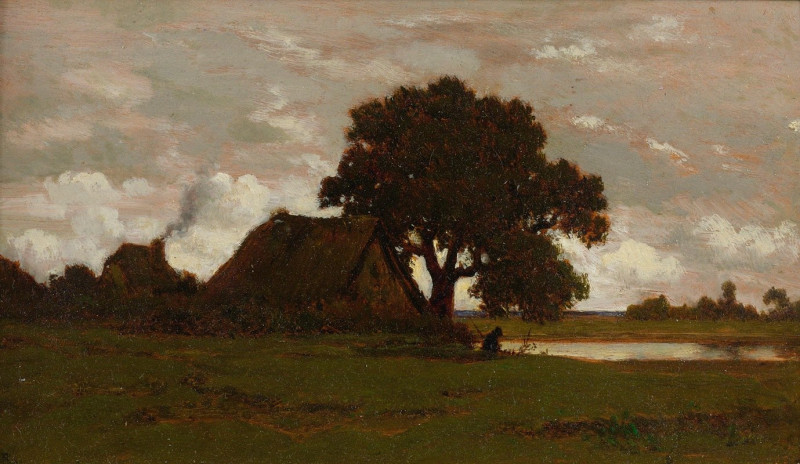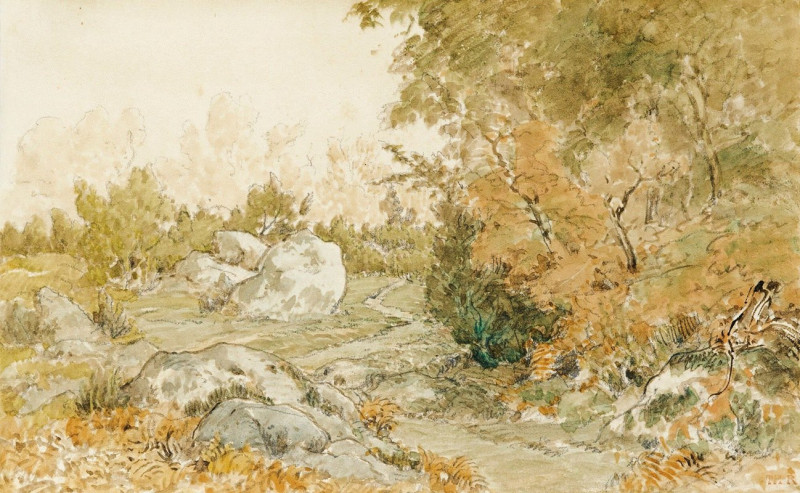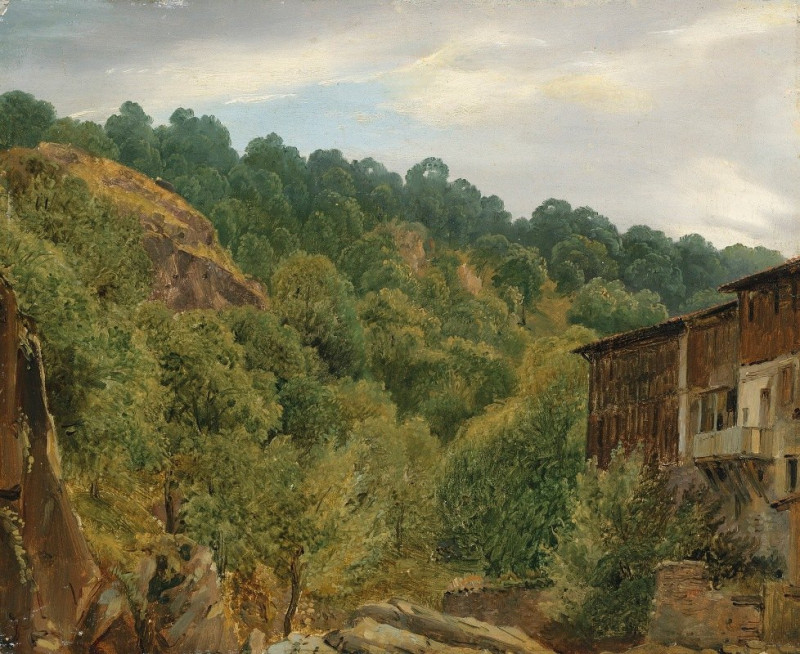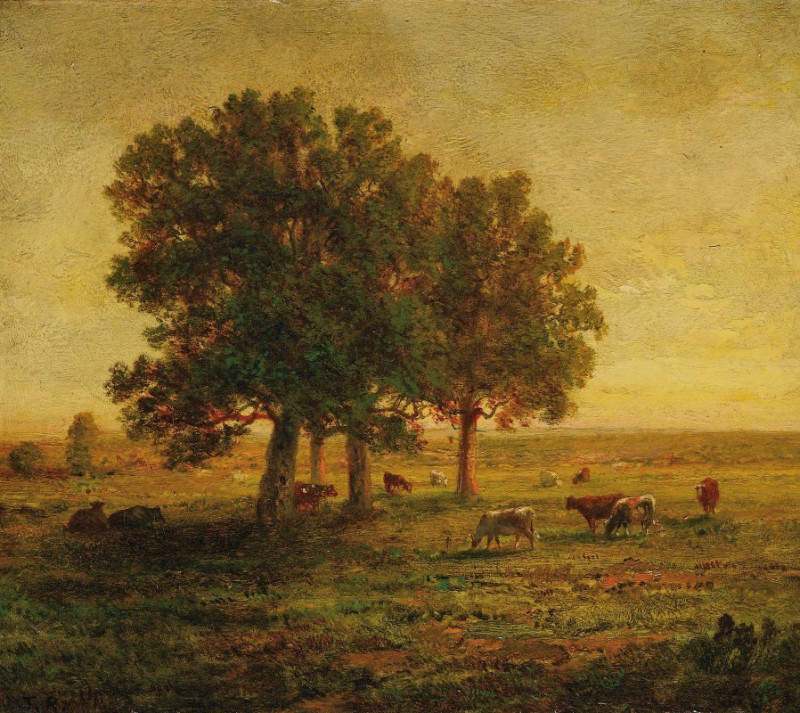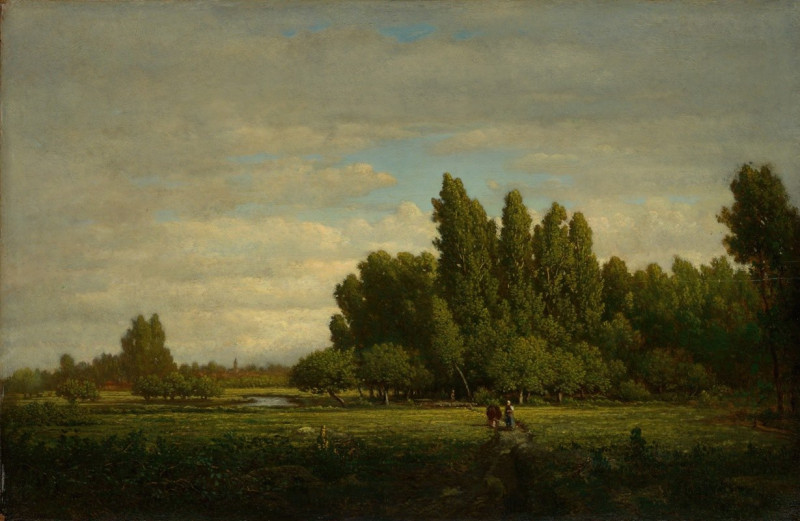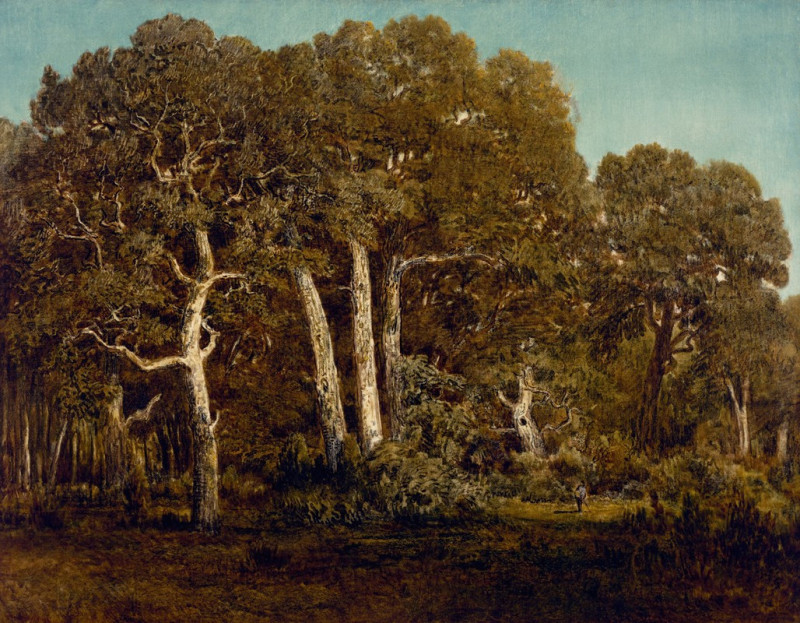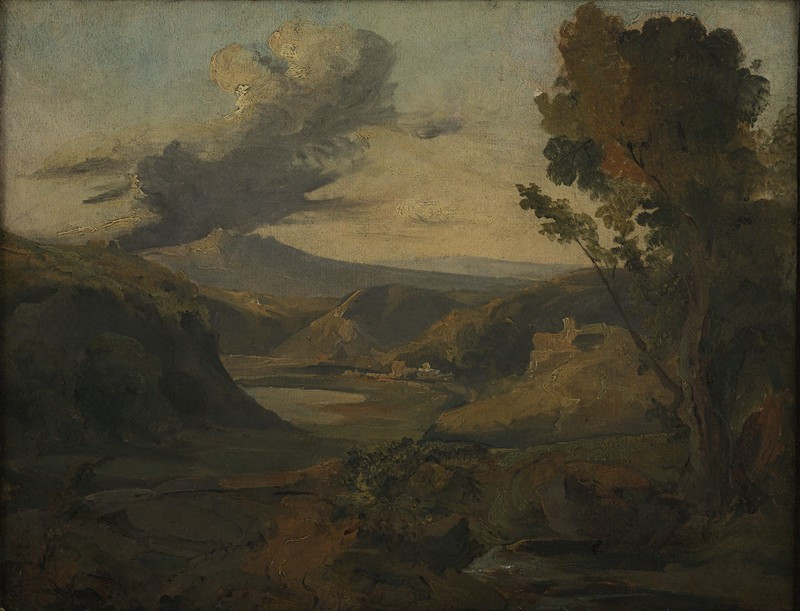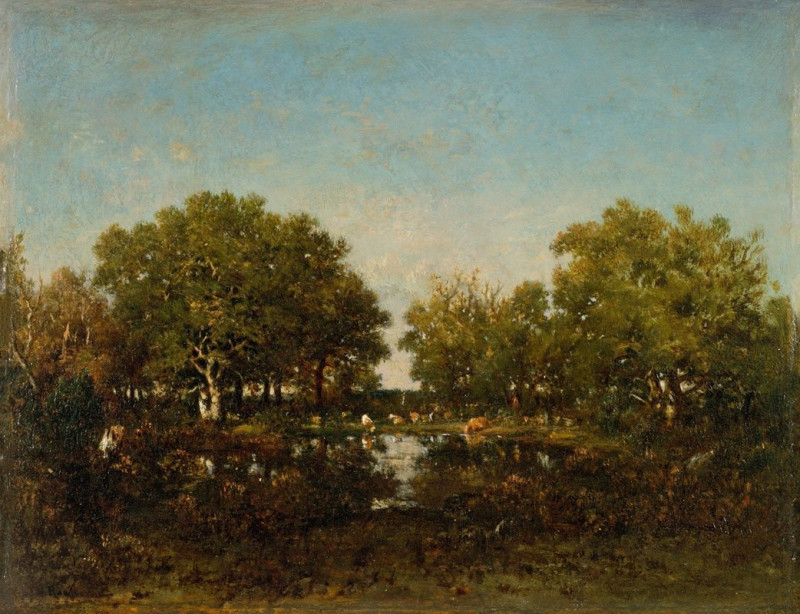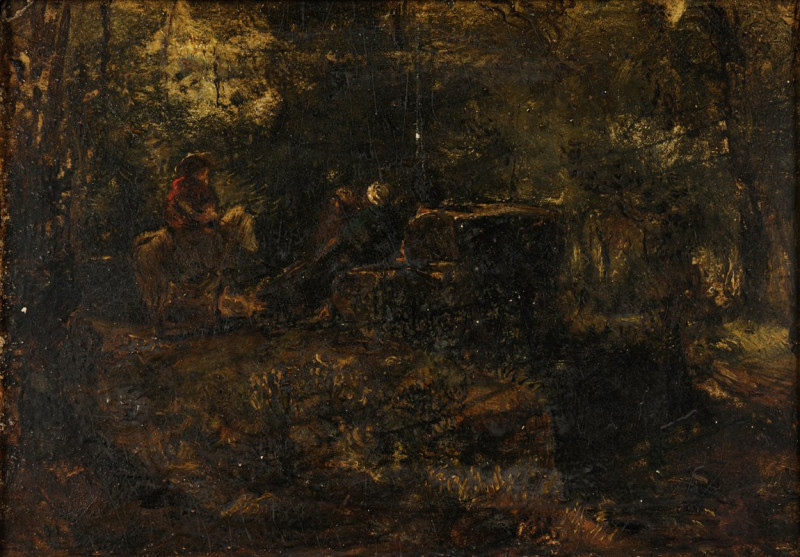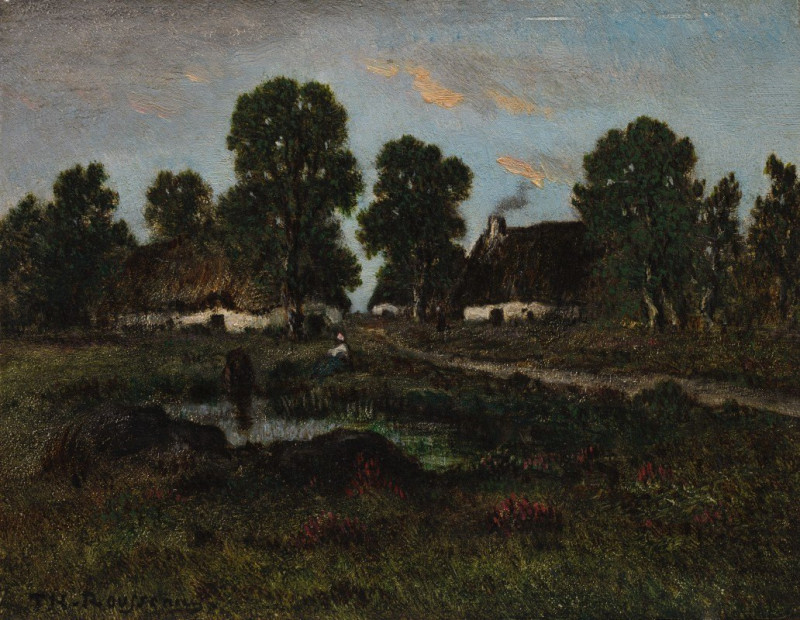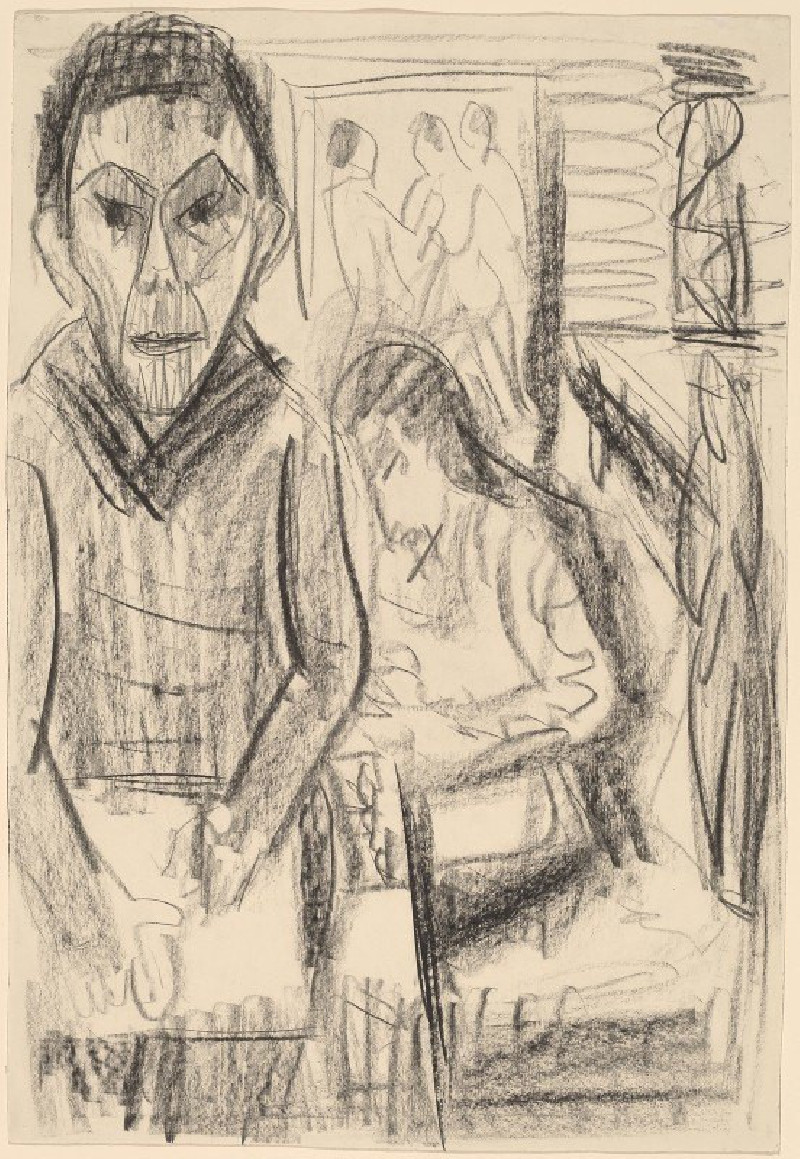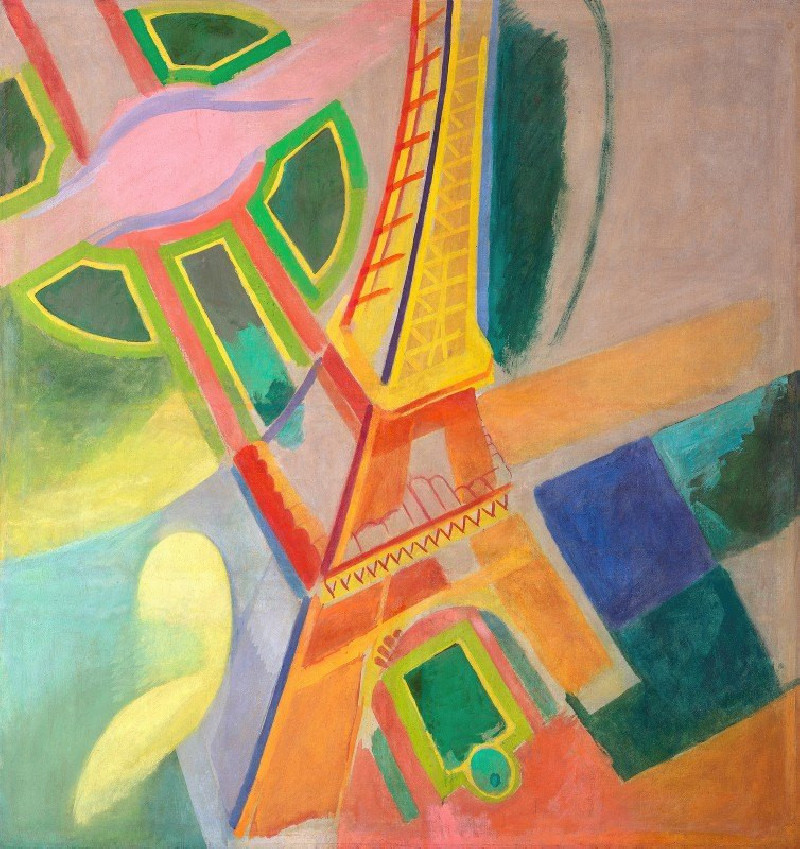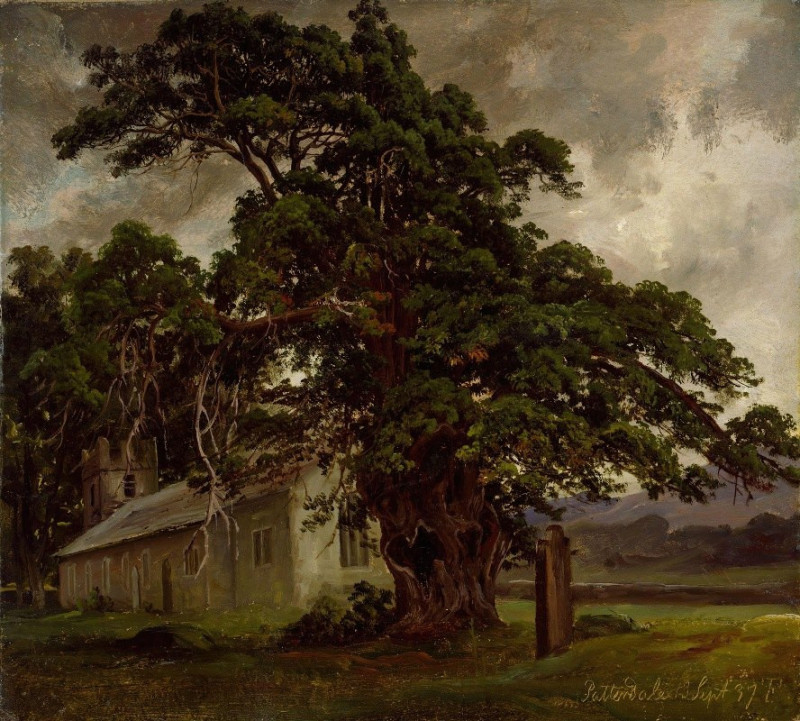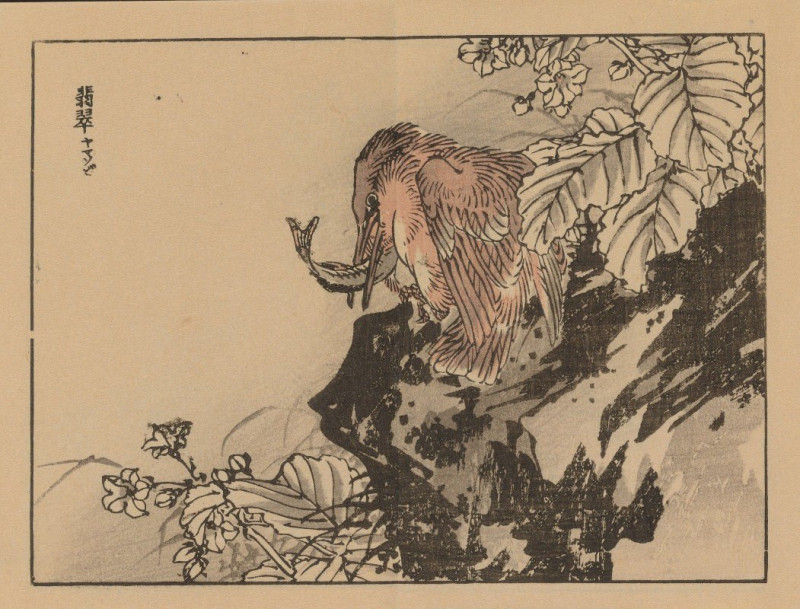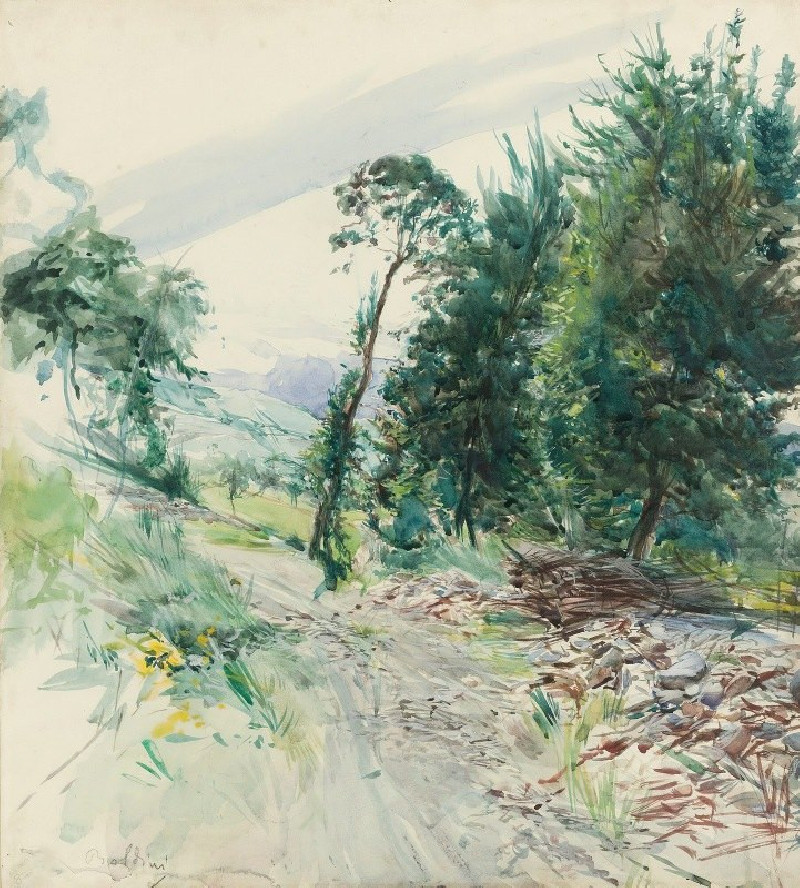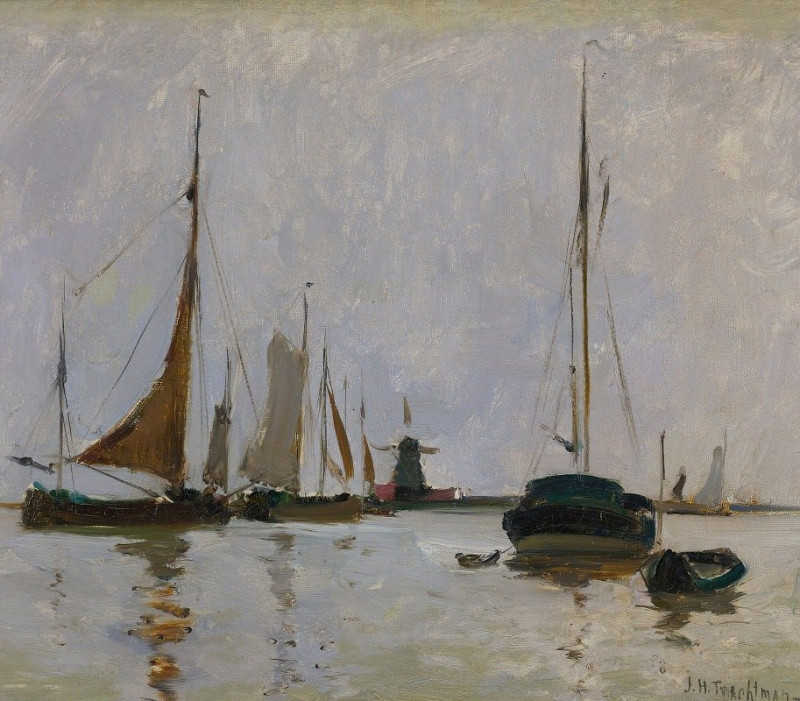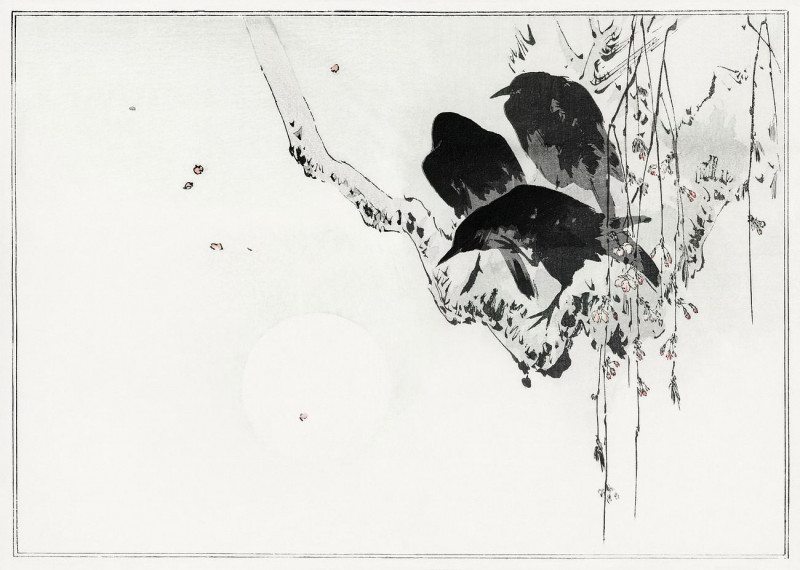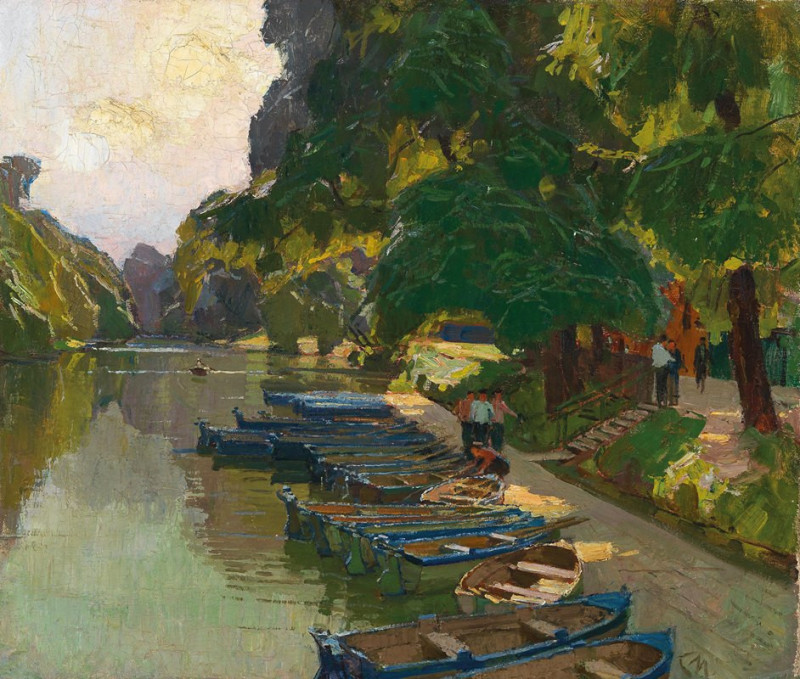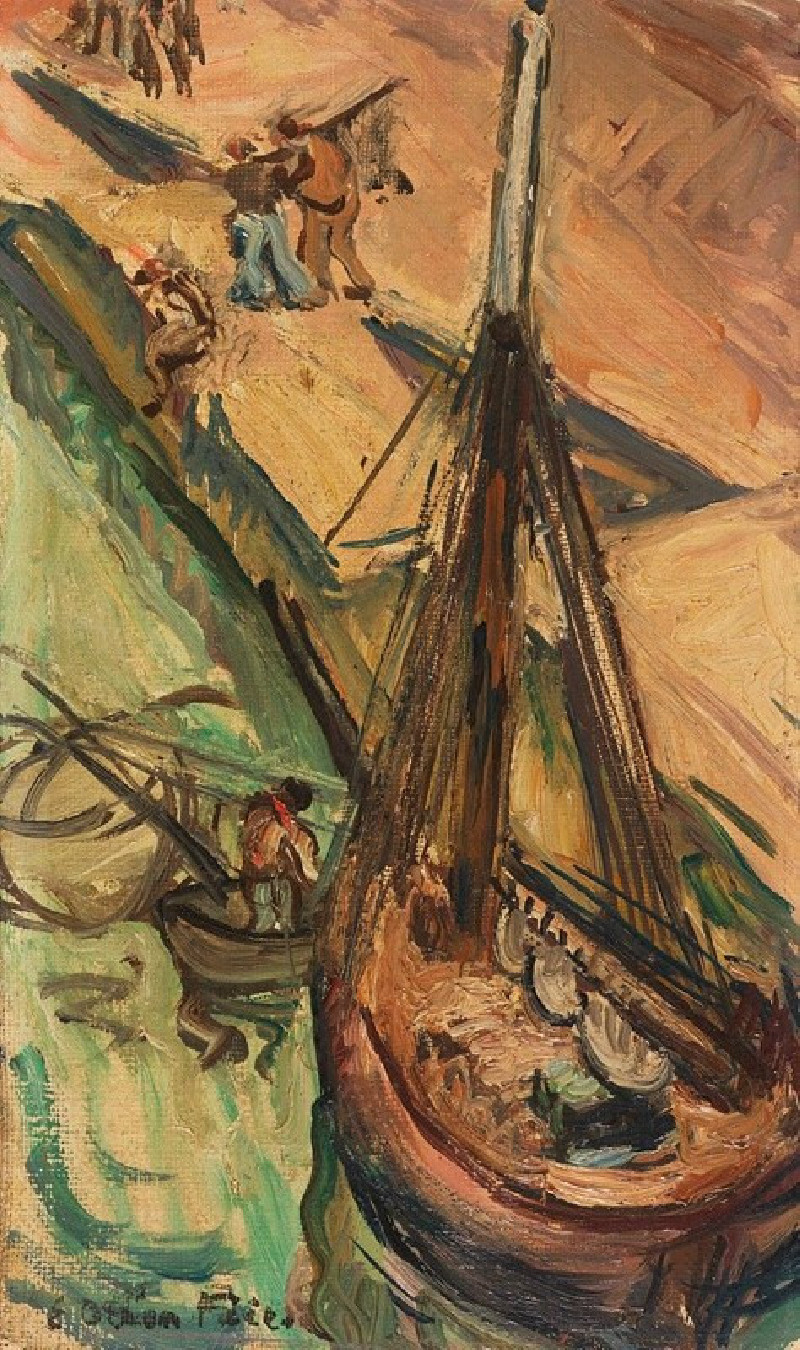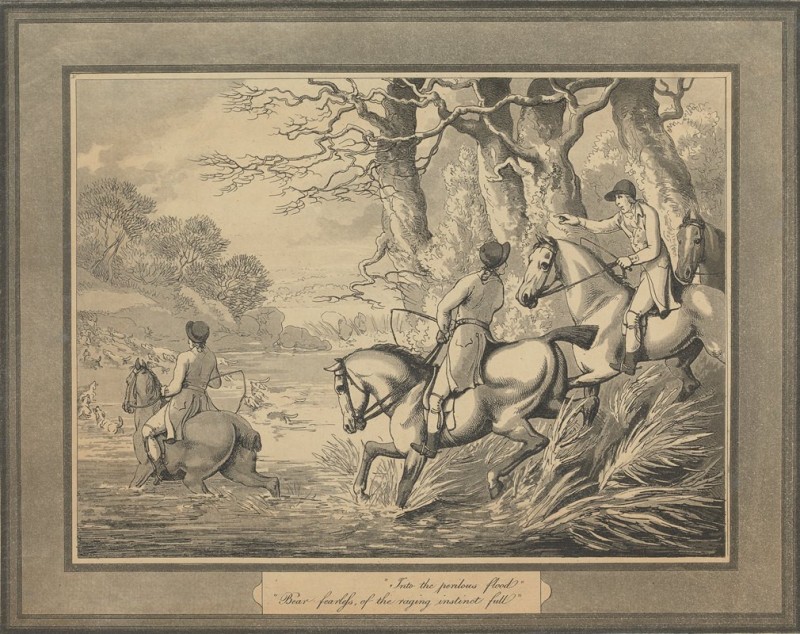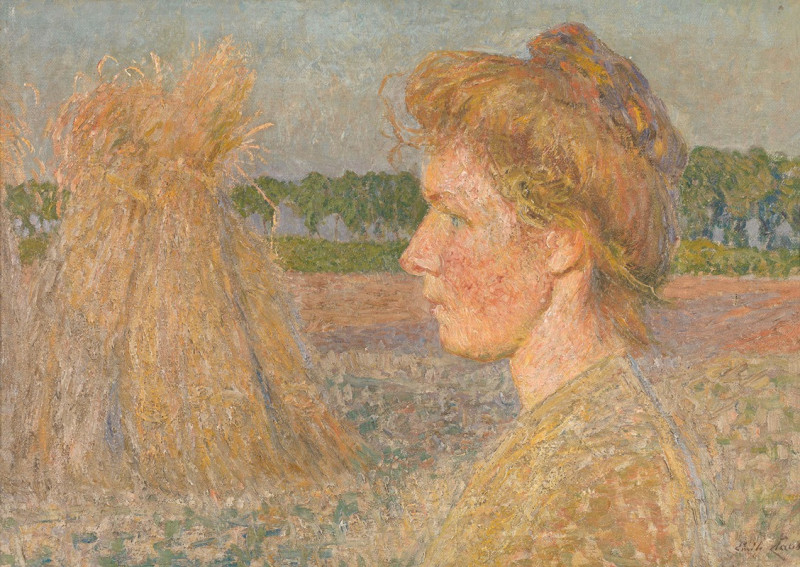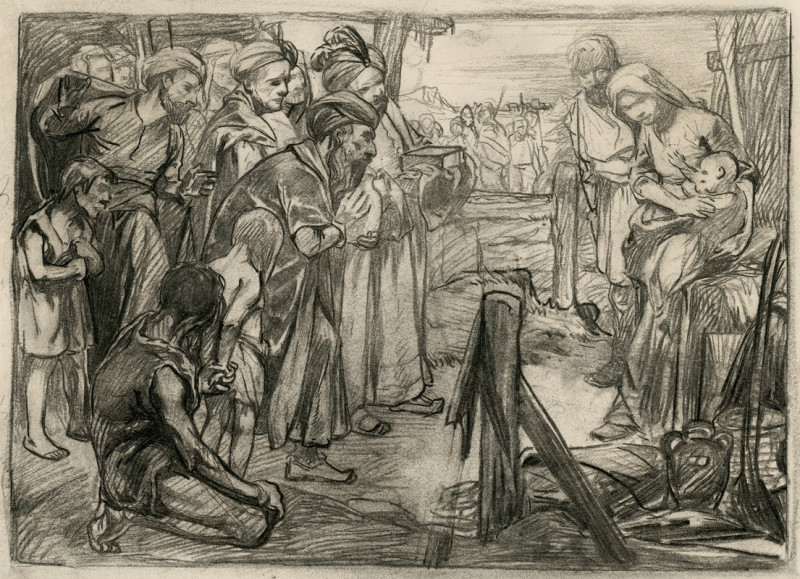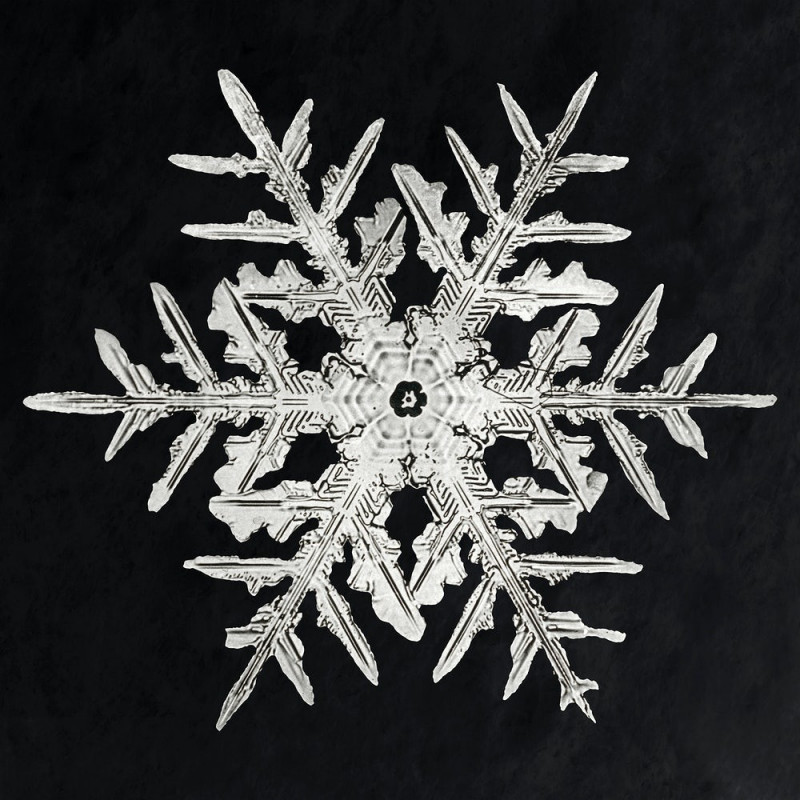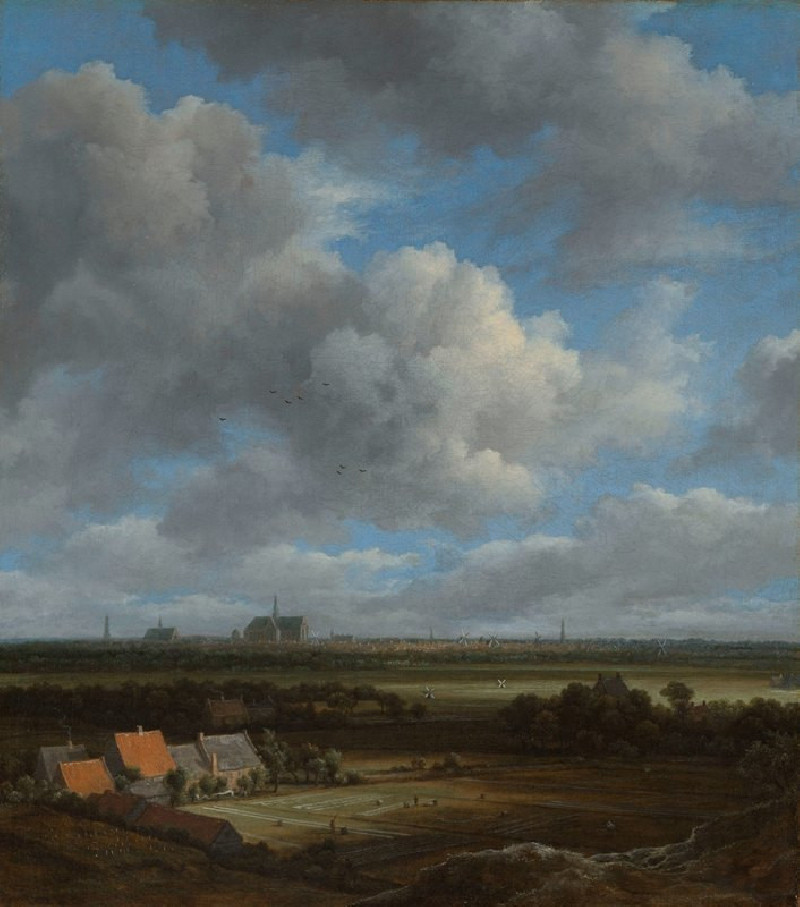Le Chêne De Roche (1860)
Technique: Giclée quality print
Recommended by our customers
More about this artwork
Théodore Rousseau, a master of French landscape painting and a leading figure of the Barbizon school, is celebrated for his intense and poignant representations of nature. His artwork "Le Chêne De Roche," painted in 1860, embodies the spirit and soul of the forest through its intricate details and rich textures.This evocative painting depicts a majestic oak tree standing resilient amidst a densely wooded area. The tree, bathed in subtle light, contrasts sharply with the dark, lush underbrush that surrounds it. Rousseau’s detailed brushwork captures the varied textures of leaves, moss, and bark, infusing the scene with a visceral sense of life and depth.The mood of "Le Chêne De Roche" is one of solitary grandeur and quiet endurance. The oak, situated at the center of the composition, serves as a powerful symbol of strength and survival. Rousseau’s use of muted, earthy colors contributes to the overall atmosphere of serenity and timeless beauty.This painting not only showcases Rousseau’s technical prowess but also his profound connection to nature. Each brushstroke conveys his deep reverence for the natural world, a theme that resonates through much of his work.
Delivery
Returns
Étienne Pierre Théodore Rousseau was a French painter of the Barbizon school.
He was born in Paris, France in a bourgeois family. At first he received a basic level of training, but soon displayed aptitude for painting. Although his father regretted the decision at first, he became reconciled to his son forsaking business, and throughout the artist's career (for he survived his son) was a sympathizer with him in all his conflicts with the Paris Salon authorities.

